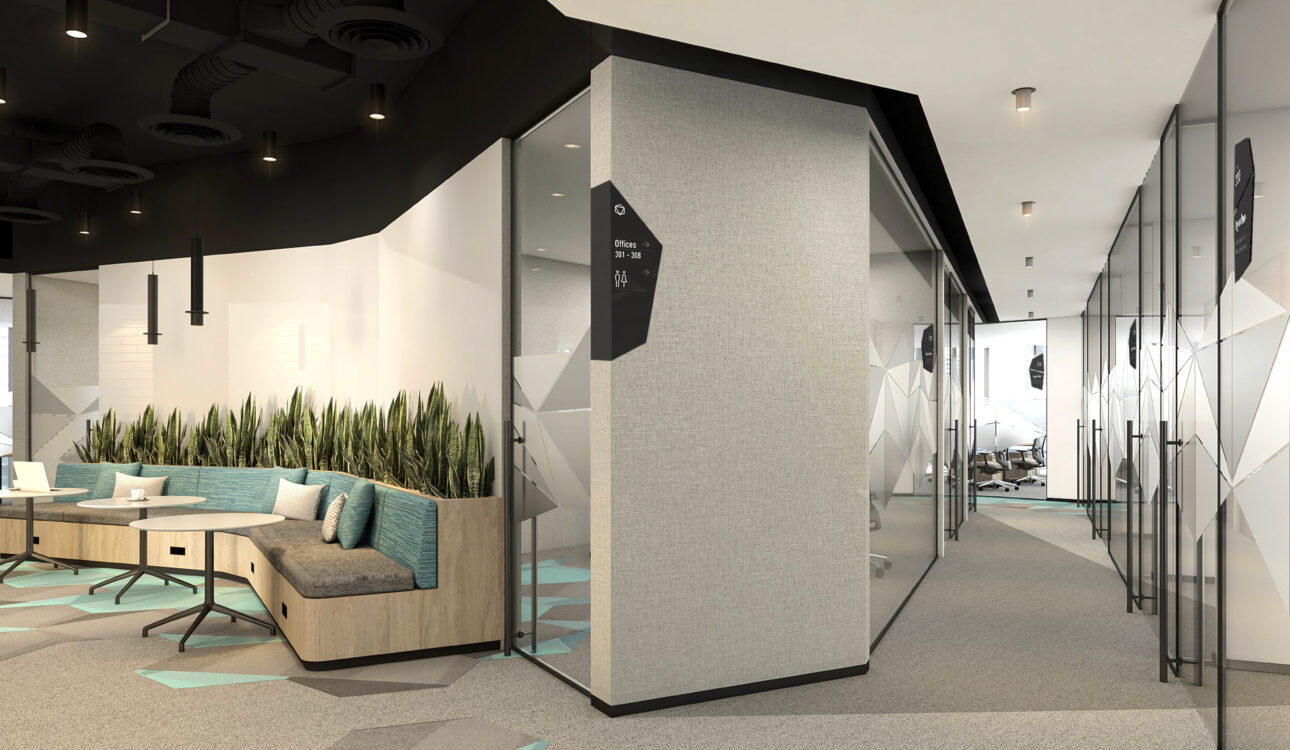Introduction
Cost-effective workspace solutions refer to various strategies and options that enable businesses to create productive and efficient work environments without incurring excessive costs in an interior fitout. These solutions range from traditional office setups to modern, flexible arrangements like co-working spaces, virtual offices, and home-based workstations. In today’s competitive business landscape, managing expenses while maintaining a productive work environment is crucial. Cost-effective workspace solutions help businesses of all sizes optimize their operations, reduce overheads, and adapt to changing market conditions. This flexibility is especially vital in a post-pandemic world where remote work and hybrid models have become more prevalent.
Types and Categories of Cost-Effective Workspace Solutions
Traditional Office Spaces
Traditional office spaces, typically leased or owned, provide a stable and controlled environment for employees. These spaces are often customized to meet specific business needs, offering a sense of permanence and identity.
Co-Working Spaces
Co-working spaces are shared environments where individuals from different companies work alongside each other. These spaces often come with flexible rental agreements, modern amenities, and opportunities for networking and collaboration.
Virtual Offices
Virtual offices provide businesses with a physical address and communication services without the need for a dedicated physical space. This solution is ideal for companies that operate remotely but require a professional image.
Home Offices
Home offices have become increasingly popular, offering convenience and cost savings. With the right setup, home offices can be as productive as traditional workspaces, provided they are well-organized and equipped.
Hot Desking
Hot desking involves multiple employees using a single workstation at different times. This approach maximizes space utilization and is commonly used in dynamic work environments where employees are frequently on the move.
Shared Office Spaces
Shared office spaces are similar to co-working spaces but are often leased by multiple businesses that may share common facilities like conference rooms, kitchens, and reception areas.
Hybrid Work Models
Hybrid work models combine elements of traditional offices, remote work, and flexible spaces. This approach allows employees to work from various locations, fostering a balance between collaboration and autonomy.
Benefits of Cost-Effective Workspace Solutions
Financial Savings
Implementing cost-effective workspace solutions can lead to significant financial savings by reducing rent, utilities, and maintenance expenses. Businesses can allocate these savings to other critical areas like technology and talent acquisition.
Flexibility and Scalability
These solutions offer the flexibility to scale operations up or down based on business needs. For instance, co-working spaces and virtual offices allow businesses to expand without the long-term commitment of traditional leases.
Increased Productivity
Well-designed workspaces tailored to employees’ needs can enhance productivity. Flexible options like home offices and hot desking allow employees to work in environments where they feel most comfortable and efficient.
Enhanced Collaboration
Spaces like co-working environments foster collaboration by bringing together diverse groups of people. This setup can lead to innovative ideas and partnerships that might not occur in isolated traditional offices.
Access to Modern Amenities
Cost-effective workspace solutions often come with access to state-of-the-art facilities and technology. Co-working spaces, for example, typically include high-speed internet, meeting rooms, and other resources that support efficient work.
Challenges and Limitations
Privacy Concerns
Shared and open-plan workspaces can lead to privacy issues, making it challenging to handle sensitive information or conduct confidential discussions.
Management and Coordination
Coordinating remote and hybrid work models requires effective management strategies to ensure smooth operations and maintain team cohesion.
Security Issues
Virtual and remote work setups can expose businesses to cybersecurity risks. Ensuring secure communication channels and data protection is critical in these environments.
Potential Isolation
Remote and home office setups can lead to feelings of isolation among employees, impacting their mental health and overall job satisfaction. Regular communication and team-building activities can mitigate this risk.
Key Factors to Consider
Location
Choosing the right location for your workspace is crucial. Consider proximity to clients, employees, and essential services when selecting a traditional office or co-working space.
Budget
Aligning workspace solutions with your budget is essential. Evaluate the costs associated with different options and choose one that offers the best value without compromising on necessary amenities.
Technology Requirements
Ensure that your chosen workspace solution can support your technological needs, including high-speed internet, communication tools, and specialized software.
Company Size and Growth Projections
Consider the current size of your company and future growth plans when selecting a workspace solution. Flexible options like co-working spaces and virtual offices can accommodate growth without requiring significant upfront investment.
Employee Preferences
Understanding your employees’ preferences can help in choosing the right workspace solution. Some may prefer the structure of a traditional office, while others might thrive in a more flexible or remote setup.
Cost-Effective Workspace Solutions for Different Business Sizes
Startups
Startups often operate with limited budgets and require flexible, scalable solutions. Co-working spaces and virtual offices provide affordable options that support growth and networking opportunities.
Small Businesses
Small businesses benefit from cost-effective solutions that offer stability and scalability. Shared office spaces and hybrid models can provide a balance between a professional environment and financial efficiency.
Medium Enterprises
Medium enterprises need to consider both current operations and future expansion. Hybrid work models and customized traditional offices can support these needs by offering flexibility and room for growth.
Large Corporations
Large corporations can significantly reduce overhead costs by implementing hybrid work models and utilizing shared office spaces for satellite offices. These solutions offer flexibility and can improve employee satisfaction.
Technological Requirements and Tools
Essential Software
Choosing the right software is crucial for productivity. Tools like project management software, collaboration platforms, and cloud services are essential for modern workspaces.
Communication Platforms
Effective communication is key to the success of any workspace solution. Platforms like Slack, Microsoft Teams, and Zoom facilitate seamless communication and collaboration among team members.
Security Tools
Ensuring data security is vital, especially in remote and virtual setups. Invest in robust cybersecurity tools, VPNs, and secure communication channels to protect sensitive information.
Office Equipment and Furnishings
Investing in ergonomic furniture and essential office equipment enhances productivity and comfort. Consider desks, chairs, monitors, and other accessories that support a healthy work environment.
How to Choose the Right Workspace Solution
Assessing Your Needs
Start by assessing your business needs, including the nature of your work, team size, and growth projections. Understanding these factors will help you choose the most suitable workspace solution.
Comparing Options
Compare different workspace solutions based on factors like cost, flexibility, amenities, and location. Create a list of pros and cons for each option to make an informed decision.
Evaluating Costs
Evaluate the total costs associated with each workspace solution, including rent, utilities, maintenance, and any additional fees. Ensure that the chosen solution aligns with your budget.
Trial Periods and Feedback
Consider opting for trial periods if available. This allows you to test the workspace solution before making a long-term commitment. Gather feedback from employees to ensure the solution meets their needs and expectations.
Setting Up Cost-Effective Workspaces
Designing Functional Spaces
Designing a functional workspace involves creating an environment that promotes productivity and comfort. Consider factors like layout, lighting, and accessibility when setting up your workspace.
Incorporating Ergonomics
Ergonomics play a crucial role in maintaining employee health and productivity. Invest in ergonomic furniture and accessories to reduce the risk of strain and injury.
Essential Furnishings
Equip your workspace with essential furnishings like desks, chairs, storage solutions, and meeting areas. Ensure that these items are of good quality and support a productive work environment.
Implementing Technology
Implement the necessary technology to support your operations. This includes high-speed internet, communication tools, and any specialized software required for your business.
Maintaining Productivity in Cost-Effective Workspaces
Time Management Techniques
Effective time management is key to maintaining productivity. Encourage employees to use techniques like the Pomodoro Technique, time blocking, and task prioritization to stay on track.
Enhancing Communication
Facilitate open and effective communication among team members. Use communication platforms and regular meetings to ensure everyone is aligned and working towards common goals.
Ensuring Work-Life Balance
Promote a healthy work-life balance by setting clear boundaries between work and personal time. Encourage employees to take breaks and manage their workload to prevent burnout.
Regular Feedback and Adaptation
Regularly gather feedback from employees to understand their needs and challenges. Adapt your workspace solutions based on this feedback to continuously improve the work environment.
Future Trends in Workspace Solutions
Increasing Remote Work Adoption
Remote work is expected to continue growing, with more businesses adopting flexible work arrangements. This trend offers employees greater flexibility and can lead to cost savings for businesses.
Smart Offices
Smart offices, equipped with IoT devices and automation, enhance productivity and efficiency. These technologies can optimize energy usage, improve security, and create a more comfortable work environment.
Wellness-Oriented Spaces
Workspaces focused on employee wellness are becoming more popular. These spaces incorporate elements like natural lighting, plants, and wellness programs to support employee health and well-being.
Integration of AI and Automation
AI and automation are transforming workspaces by streamlining processes and enhancing productivity. From smart assistants to automated workflows, these technologies are shaping the future of work.
Expert Insights
Quotes from Industry Leaders
“Flexible workspace solutions are not just a trend; they are the future of work. Businesses that adapt to this model will see increased productivity and employee satisfaction.” – John Doe, CEO of Workspace Solutions Inc.
Predictions from Analysts
Analysts predict a continued rise in the adoption of hybrid work models, with businesses increasingly investing in technology to support remote work.
Practical Advice from Workspace Designers
“Designing a workspace that promotes collaboration and flexibility is key. Consider the needs of your employees and create spaces that can adapt to different working styles.” – Jane Smith, Workspace Designer
Frequently Asked Questions (FAQs)
Q: What are the most cost-effective workspace solutions?
A: The most cost-effective workspace solutions include co-working spaces, virtual offices, and home offices. These options offer flexibility, scalability, and significant cost savings compared to traditional office spaces.
Q: How can I ensure productivity in a home office?
A: To ensure productivity in a home office, create a dedicated workspace, establish a routine, minimize distractions, and use productivity tools. Ergonomic furniture and good lighting also contribute to a productive environment.
Q: What are the benefits of co-working spaces?
A: Co-working spaces offer numerous benefits, including cost savings, flexibility, networking opportunities, access to modern amenities, and a collaborative environment that fosters innovation.
Q: How do virtual offices work?
A: Virtual offices provide businesses with a physical address, mail handling, and communication services without the need for a dedicated physical space. This solution is ideal for remote businesses that require a professional image.
Q: What is hot desking and how can it benefit my business?
A: Hot desking involves multiple employees sharing a single workstation at different times. This approach maximizes space utilization, reduces overhead costs, and supports a flexible and dynamic work environment.
Conclusion
In conclusion, adopting cost-effective workspace solutions is crucial for businesses aiming to optimize operations, reduce expenses, and enhance employee satisfaction. By exploring various options such as co-working spaces, virtual offices, and hybrid models, companies can find flexible and scalable solutions tailored to their unique needs. Understanding the benefits and challenges, considering key factors, and staying informed about future trends will enable businesses to create productive and sustainable work environments that support growth and innovation.






